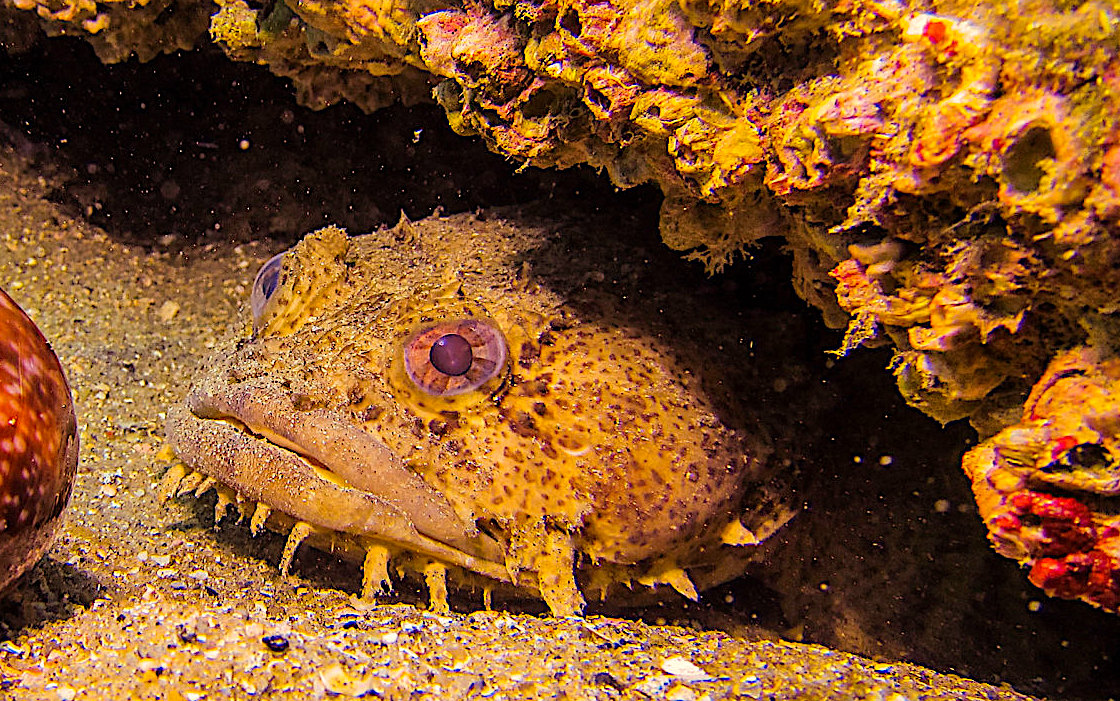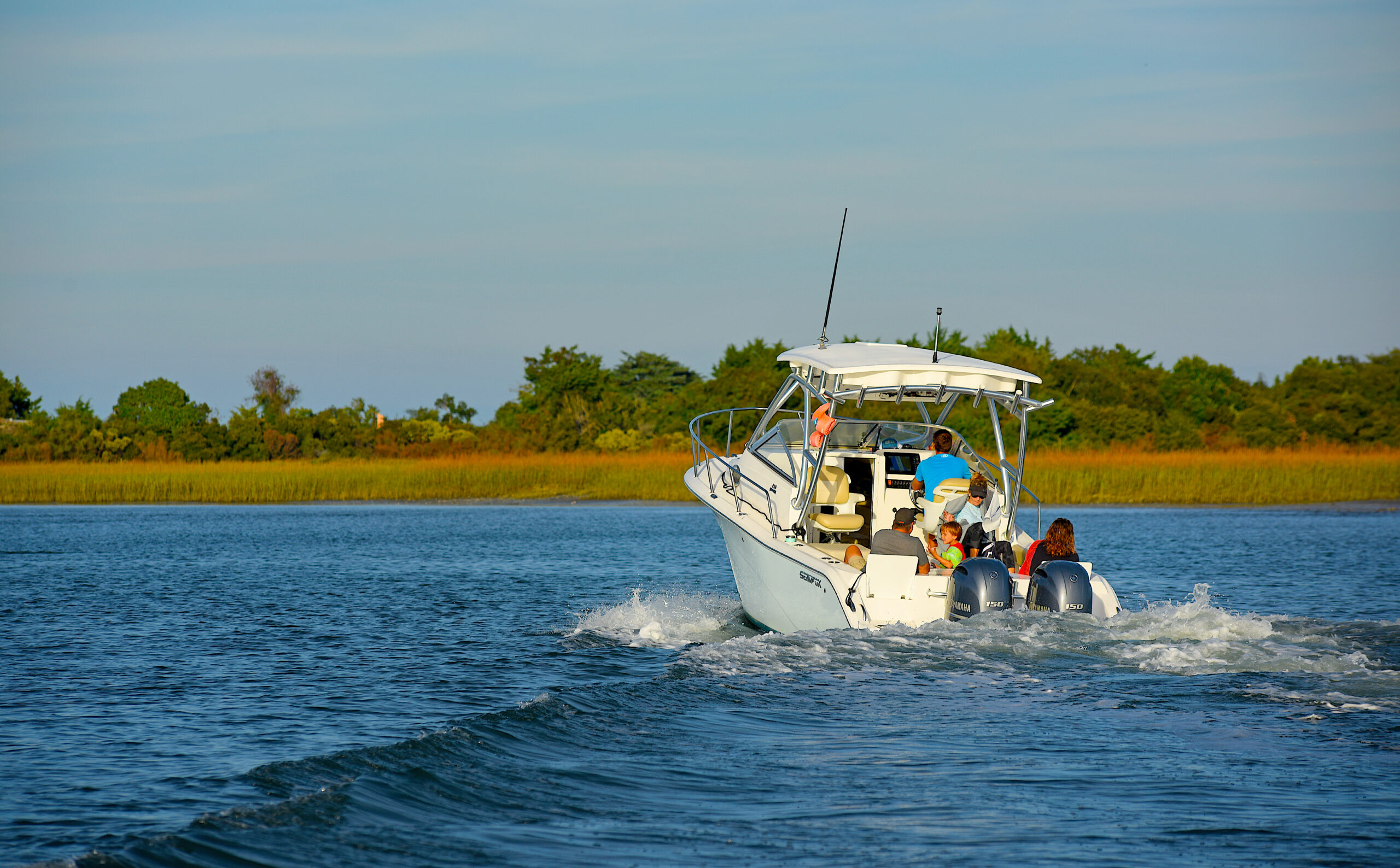When it comes to calling for mates, night life for some toadfish doesn’t even kick off until 12 AM.
Research Need
Oyster toadfish are common along the East Coast from Maine to Florida, including North Carolina. Most anglers know these fish either by their unusual appearance and the unique vocalizations that males use to call to females. Not exactly the preferred catch of seafood consumers, the fish is bony, venomous, and difficult to fillet, yielding little meat.
But even if anglers don’t prefer oyster toadfish, scientists do like to study them.
Toadfish are easy to observe and collect because they live in shallow coastal waters. They are hardy, routinely found in waters of poor quality, and can even be reared in captivity if needed. But scientists are fascinated most by studying how the male fish alter their vocalizations based on environmental conditions.
Given that the East Coast is varied and ranges from noisy seaports to harbors with little to no noise pollution, how would oyster toadfish in different environments alter their vocalizations for potential mates? Specifically, do toadfish behave differently in areas with high and low levels of noise from boat traffic?
What did they study?
The research team hypothesized that toadfish would alter their vocalizations based on local conditions. The team deployed passive monitoring systems to listen to oyster toadfish vocalize at two locations over three 24-hour periods during the summer spawning season. Pier 40 in New York City served as a site with both high boat traffic and high background noise, and Eel Pond at Woods Hole, Massachusetts, provided a water body with both low boat traffic and low background noise.
What did they find?
The results suggest that the male oyster toadfish in New York City waters have acclimated to their environment by vocalizing more frequently from around midnight to early morning, avoiding the sustained level of background noise from intense boating activity during other periods.
However, toadfish at the quieter Woods Hole site made most of their calls much earlier in the evening, from around sunset to midnight. That period is still too noisy in New York City.
From a broader perspective, the toadfish calling behavior observed at Woods Hole is similar to toadfish observations made previously at other tranquil, non-urban locations.
Anything else?
Just how busy is New York City boat traffic? Researchers identified numerous commercial and recreational boats crossing that study site, with an average of 35 boats per hour, creating an environment significantly noisier than the quieter study site at Woods Hole, which saw little activity of large vessels.
So What?
As our estuaries become more urbanized, there is a continual need to define new ways to evaluate human impacts on native species and ecosystems. This study suggests that oyster toadfish are indeed adjusting to an altered environment. More longer-term research can determine what impact these behavioral changes might have on mating, survival, and stress.
Reading
Hom KN, Quigley TD, Rodriguez RD, Gdanski SG, Lazrinth XI, Jones R, Forlano PM. Characterization of anthropogenic noise and oyster toadfish (Opsanus tau) calling behavior in urban and small-town coastal soundscapesa). J Acoust Soc Am. 2024 Feb 1;155(2):1230-1239. doi: 10.1121/10.0024763. PMID: 38341750.
Lead photo: oyster toadfish; credit: Allison Scott : NOAA.
BY SCOTT BAKER.

- Categories:




